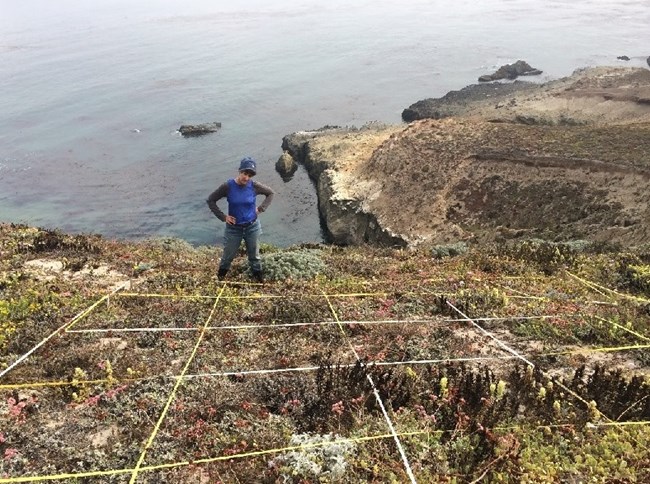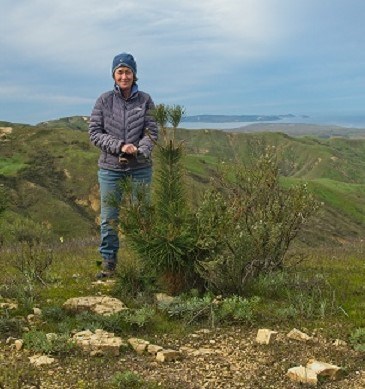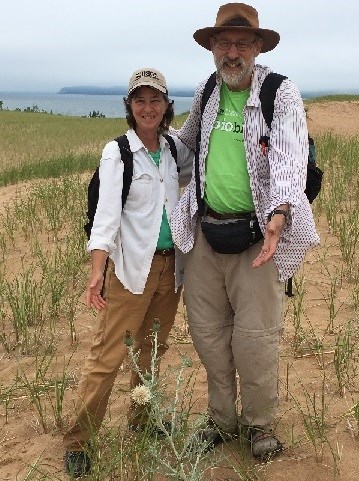
Photo by Michelle Gados
Kathryn McEachern loves working as a Research Plant Ecologist with the United States Geological Survey (USGS). In fact, she considers it her dream job! The USGS is a sister agency to the National Park Service (NPS), and its goal is to “monitor, analyze, and predict current and evolving dynamics of complex human and natural Earth-system interactions and to deliver actionable information at scales and time frames relevant to decision makers.” Kathryn conducts research to answer questions national parks and sites from other federal agencies have about their resources. She researches information that parks need to make good, informed decisions.
The outdoors has always been special in Kathryn’s life. She grew up in Nashville, Tennessee, where she loved to be outside hiking and surrounded by nature. She always enjoyed categorizing items found outdoors and understanding their relationships with one another. Kathryn found everything outdoors interesting. She and her family took vacations to South Carolina, and it was there that she learned to love sand dunes.

Photo by Trey Demmond
In 1988, Kathryn began working with the NPS, transitioning to USGS in 1994. She continues to be grateful to the NPS for all they do to inform the public about preserving nature. During her time with the park service, she focused on conservation of coastal ecosystems. She even began working on a long-term study on coastal dunes which is still in existence today. This research eventually led her to sunny California, where she is currently employed by USGS and is interested in learning how rare plants and vegetation assemblages grow and change over time. Kathryn studies rare plants and tracks native and alien plants on California’s Channel Islands, and even guides prototype vegetation monitoring programs. In addition to her work there, she assists various agencies around the country with plant community monitoring programs. Kathryn provides research to those agencies and the agencies in turn decide what they wish to do with that information.

Photo by Julie Christian
What makes her current position with USGS her dream job? Kathryn gets to be outside and work with others, all while doing research and studying science! She explains that every new, young person that joins a company needs to prove themselves. That’s what she did at the coal mine. She knew the coal mine was a male dominated field, but that did not stop her from doing her best, and showing everyone what she was made of.
Kathryn advises everyone to be open to opportunity. She reminds women going into science to “pick a field that you can build a career on - one that you like.” It is important to find others that have the same interests as you, to work together, and to build your knowledge together. She says, “It’s okay, you don’t have to have it all figured out at twenty-four.”
Last updated: December 3, 2020
